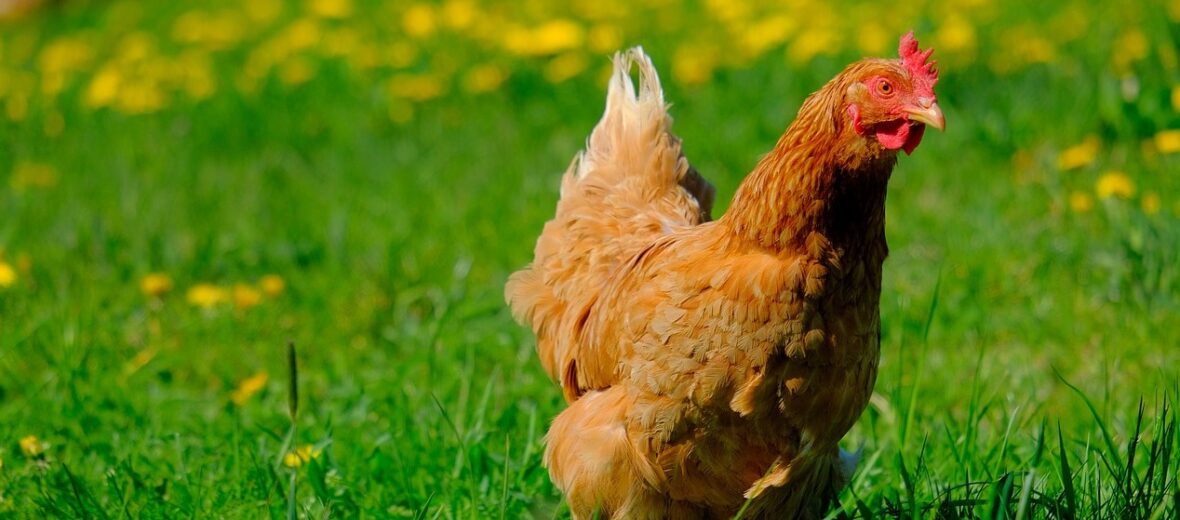
Well known the world over, it’s the chicken. These famous birds evolved from the red junglefowl and the grey junglefowl. They can be found on every continent except Antarctica. Whether they’re kept as pets, egg producers, or just used as a poultry dinner, these birds deserve a little respect. After all, they did ultimately evolve from the famous Tyrannosaurus Rex. This article is on special request from my good friend, Ryan.
First the Stats…
Scientific name: Gallus gallus domesticus
Weight: Up to 8.6 lbs.
Length: Up to 27.6 inches
Wingspan: Up to 26.3 inches
Lifespan: Up to 12 years
Now on to the Facts!
1.) Chickens were believed to be domesticated in Southern China over 8,000 years ago in 6000 B.C.
2.) With an estimates 25+ billion strong population, chickens outnumber all the people on earth.
3.) They are able to taste salt but not sugar.
4.) Chickens have a great memory and are able to remember up to 100 people and animal faces.
5.) Talk about your ridiculous laws, there is a law in In Gainesville, Florida that states you have to eat fried chicken with your bare hands. Eating it by any other means is illegal. Glad we pay lawmakers to pass laws like this… SMH
But wait, there’s more on the chicken!
6.) On average, about 97 chickens are slaughtered every 0.05 seconds throughout the world.
7.) South Korea has the most fried chicken restaurants of anywhere else in the world. They have more restaurants than the worldwide total of McDonald’s restaurants.
Did you know…?
There is an extremely rare breed of chicken from Indonesia that is totally black, including the feathers, beak, and even the organs; due to hyperpigmentation. If you want one, be prepared to cough up $2,500!
8.) The United Kingdom virtually eliminated salmonella by simply vaccinating chickens.
9.) Americans eat an estimated 8 billion chickens per year! This is more than beef, at 80 lbs. of chicken compared to 63 lbs. of beef per year.
10.) Chicken wings used to be thrown out, rather than served for a meal. One day, in 1964, a restaurant owner barbecued and served them as a meal, calling them “Buffalo wings”. They were named after the city in which they were first made: Buffalo, New York.
But wait, there’s still more on the chicken!
11.) There is an actual invention called a “chicken gun” which is used to test the resistance of airplane windows and engines by shooting dead chickens at the planes. I kid you not.
12.) A decapitated chicken can run the length of a football field before it dies.
13.) Chickens are known to see and dream in full color. How scientists can tell what they dream of is beyond me.
14.) The farthest a chicken has ever been recorded flying was 13 seconds at a total of 301 feet before touching down.
Did you also know…?
Baby chicks can develop object permanence as early as 2 days old. In contrast, it takes human babies around 7 months to accomplish this feat.
15.) Chickens use over 30 different sounds to communicate.
But wait, there’s even more on the chicken!
16.) A fear of chickens is called Alektorophobia. Imagine that… being chicken of a chicken.
17.) To aid in the reduction of oil on their feathers, chickens will take dust baths.
18.) Chickens are omnivores and cannibalistic. A hen will eat their own raw eggs if they are not satisfied with their diet. But their primary foods of choice are seeds, invertebrates (they especially love scorpions), small lizards, and amphibians. They have also been recorded eating mice. Om nom nom!
19.) It has been documented that listening to classical music yields larger, heavier eggs. Tchaikovsky for chickens!
20.) In order to attract the love of a hen, roosters will do a special dance called “tidbitting”. This involves waddling, bobbing their head up and down, and making a variety of special sounds.
But wait, there’s still even more on the chicken!
21.) Like many other birds, chickens have 3 eyelids. The upper, the lower, and a nictitating membrane (used for dust removal and eyeball moistening).
22.) The earlobes have it. Chickens with red earlobes lay brown eggs and those with white lobes lay white eggs. There are other chicken breeds that lay green and bluish eggs. Now you know.
Did you know…?
It takes around 26 hours for a hen to produce a single egg, and 21 days for the egg to incubate and then hatch.
23.) A hen needs to eat about 4 lbs. of grain to make a dozen eggs.
24.) The world record for most yolks in a single egg is 9!
Now a Short Chicken Video!
Also, check out the Critter Science YouTube channel. Videos added frequently!
Want to suggest a critter for me to write about? Let me know here.



